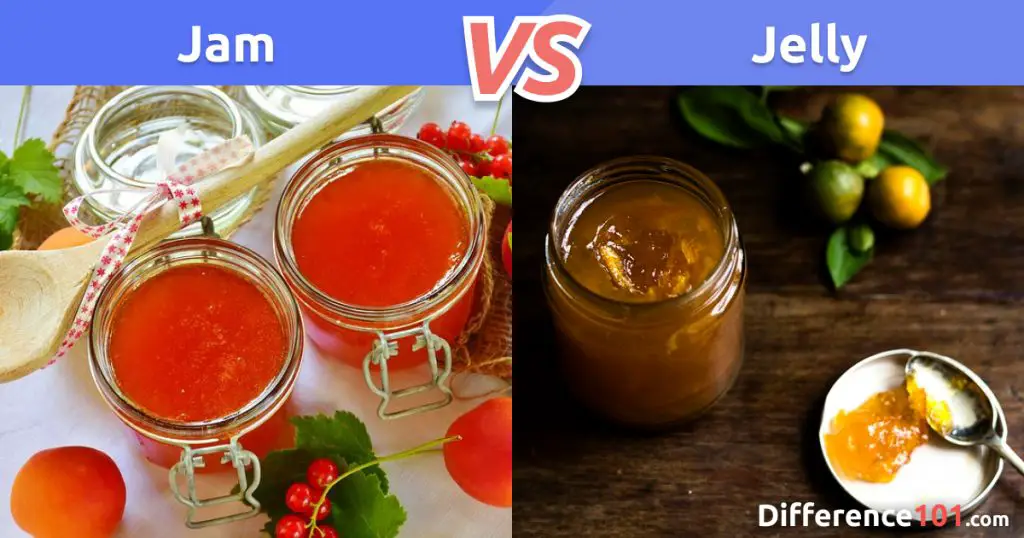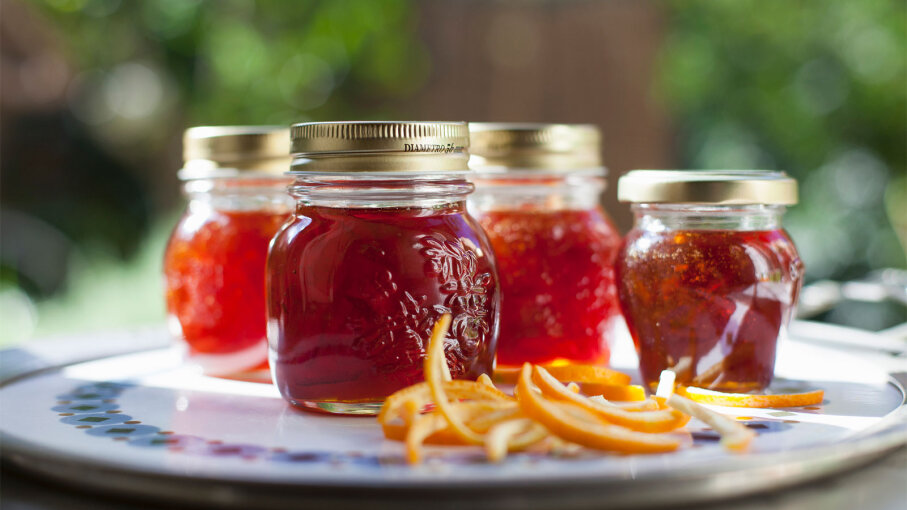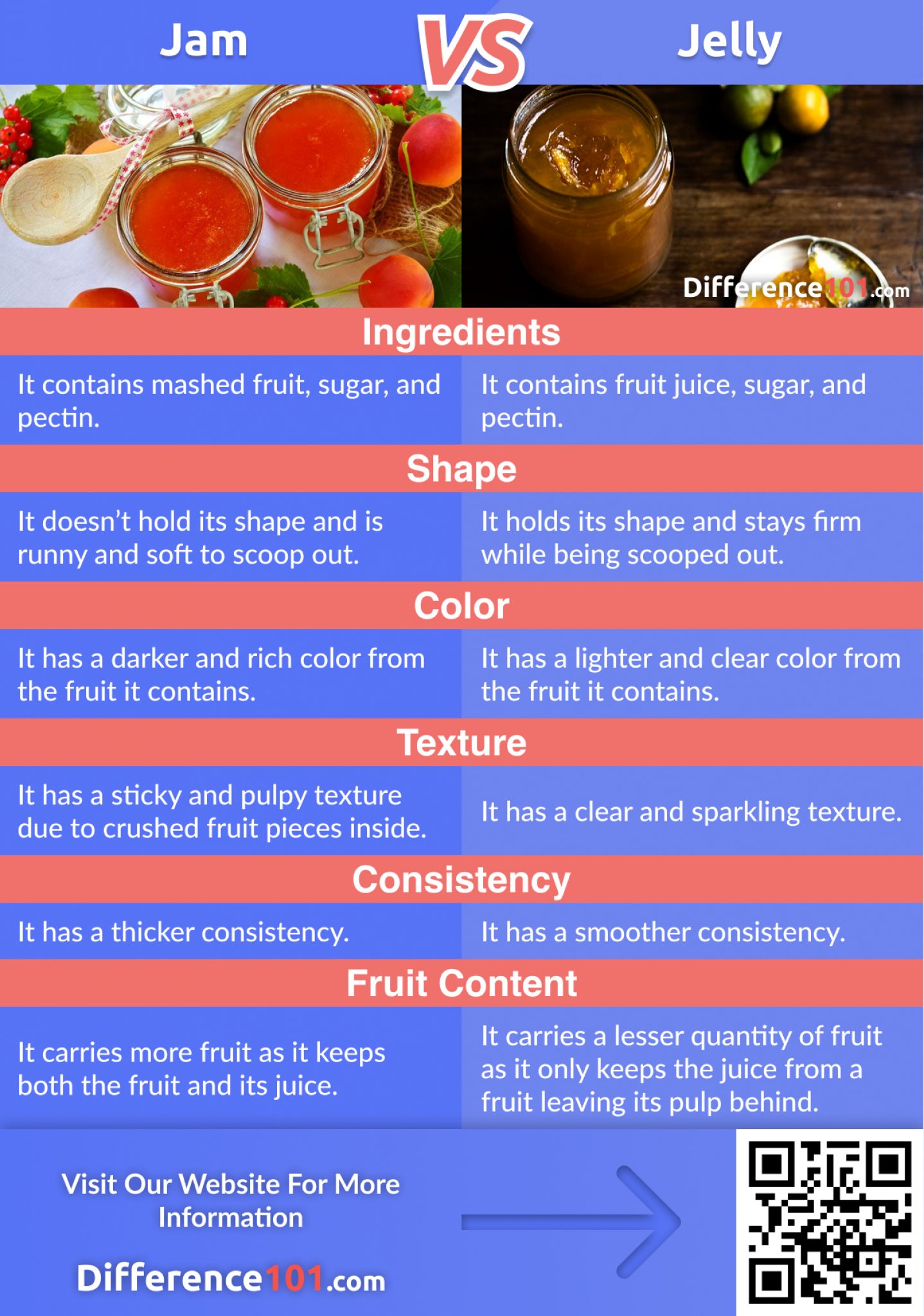/difference-between-jelly-jam-and-marmalade-435612_final-5c0065c8c9e77c0001e92038.png)
Introduction
When it comes to spreads for toast or sandwiches, many people use the terms "jam" and "jelly" interchangeably. However, these two popular spreads are actually quite different. In this article, we will explore the differences between jam and jelly.
Ingredients

The main difference between jam and jelly is the ingredients used to make them. Jam is made from whole fruit or pureed fruit, which is then cooked with sugar and pectin to create a thick, spreadable consistency. Jelly, on the other hand, is made from fruit juice that is cooked with sugar and pectin to create a clear, firm consistency.
Texture
The texture of jam and jelly is another major difference between the two spreads. Jam has a thick, chunky consistency due to the use of whole or pureed fruit. Jelly, on the other hand, has a smooth, firm texture due to the use of fruit juice.
Flavor

The flavor of jam and jelly can also vary significantly. Jam tends to have a more intense fruit flavor because it uses whole or pureed fruit. Jelly, on the other hand, has a milder flavor because it uses fruit juice.
Uses

Both jam and jelly can be used in a variety of ways. Jam is often used as a spread for toast or sandwiches, as well as a topping for yogurt or oatmeal. Jelly is commonly used as a topping for toast or biscuits, as well as in desserts like jelly rolls or thumbprint cookies.
Storage

When it comes to storage, jam and jelly have different requirements. Jam can be stored in the refrigerator for up to 3 months or in the freezer for up to a year. Jelly, on the other hand, can be stored in the refrigerator for up to 6 months or in the freezer for up to a year.
Health Benefits

Both jam and jelly contain sugar, which can be a concern for those watching their sugar intake. However, they also contain beneficial nutrients from the fruit used to make them. For example, both jam and jelly made from berries are high in antioxidants, which can help protect against cancer and other diseases.
Conclusion
In conclusion, while jam and jelly may seem similar, they are actually quite different in terms of ingredients, texture, flavor, uses, and storage. Whether you prefer the chunky texture and intense fruit flavor of jam or the smooth, firm texture and milder flavor of jelly, both spreads can be enjoyed as part of a balanced diet.